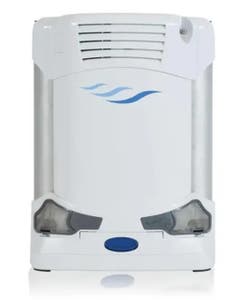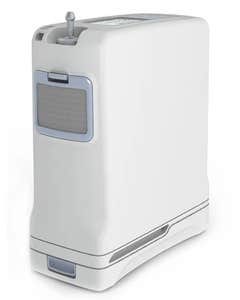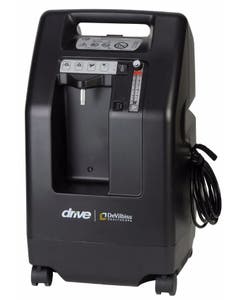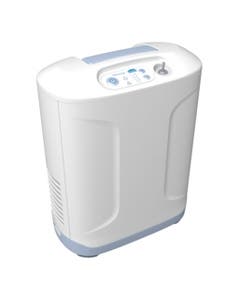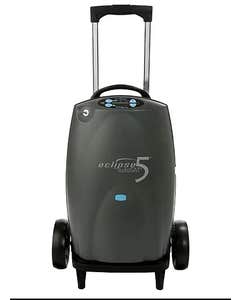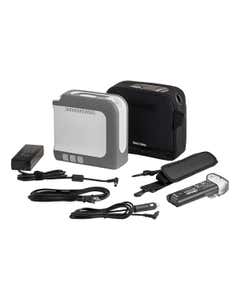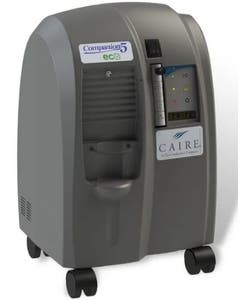
While oxygen therapy provides helpful benefits to anyone with a respiratory illness such as COPD or asthma, there is always the risk of side effects. Knowing the best practices for oxygen therapy and following a few tips for prevention can help make your treatments safe and effective.
What are Oxygen Therapy Side Effects?
With regular use of an oxygen tank or oxygen concentrator, you may experience some side effects of oxygen therapy. By knowing and understanding the side effects, you can take action to try to prevent them in the future.
Skin Irritation
Using a nasal cannula or mask regularly can lead to some skin irritations such as rashes or breakouts. To help with irritation, use a topical treatment or lotion to help reduce this side effect.
Nose Bleeding and Nasal Dryness
The dryness of pure oxygen can dry out nasal passages and also cause irritation. In some instances, the dryness may result in nose bleeds. Using a moisturizing product, such as a saline nasal mist or nasal gel, can help lubricate and soothe nasal passages.
Ear Pressure & Pain
Some patients have experienced ear pressure and pain from the pressurized flow during oxygen therapy. This side effect, similar to the ear pressure felt during changing altitude on an airplane, can be resolved by simply yawning, swallowing, or pinching your nose and gently blowing to relieve the pressure.
Soreness
Soreness around the nose is common with the frequent use of a nasal cannula. As a result to help with this, apply moisturizing lotions to reduce soreness at the point of cannula or mask contact.
Fire Hazard
The use of oxygen tanks for oxygen therapy is a fire hazard. That's because oxygen is flammable. To combat this, choose an oxygen concentrator as a safer alternative. Also, avoid smoking around oxygen and keep oxygen away from open flames.
Oxygen Toxicity
Too much pure oxygen can be a bad thing. Oxygen toxicity occurs when an excess amount of oxygen causes damage to the lungs. Irritation in the airways and excessive coughing and shortness of breath are indicators of oxygen toxicity. Be sure to use your oxygen as prescribed by your doctor. You can also monitor your blood oxygen by using a pulse oximeter to ensure you are not reaching toxic levels.
Suppression of Breathing
The sensation that oxygen therapy is impairing normal breathing is a rare side effect. If you experience this feeling that your breathing is being suppressed during oxygen therapy, contact your doctor immediately.
How to Deal with Side Effects of Oxygen Therapy in COPD
COPD patients may have to use oxygen therapy more often than patients with other types of respiratory illnesses. This means that COPD patients are more likely to experience side effects. Here are some tips for managing side effects with frequent supplementary oxygen use.
Oxygen Humidifier
Oxygen humidifiers can be attached to most oxygen concentrators. They add moisture to pressurized oxygen which can reduce the side effects of dryness.
Moisturizers
Moisturizers help reduce nasal irritation and soreness. Use these topical treatments regularly to prevent these side effects.
Saline Nasal Sprays
Saline nasal sprays are another option for moistening nasal passages and preventing nasal dryness.
Lubricating Jelly and Nasal Gel
Lubricating jellies and gels soothe dry nasal passages and help prevent the irritation that comes with frequent supplemental oxygen use.
Conclusion
No matter how often you use oxygen therapy, finding ways to reduce side effects can make treatments safe, comfortable, and healthy.


Oxygen therapy is the use of oxygen as a medical treatment for those who need supplemental air. While oxygen therapy provides helpful benefits to anyone with a respiratory illness such as COPD or asthma, there is always the risk of side effects. Knowing the best practices for oxygen therapy and following a few prevention tips can help make your treatments safe and effective.
Benefits of Oxygen Therapy
Oxygen therapy is the common treatment for several chronic lung conditions, and not only does it increase the oxygen levels in your blood, but it also helps you:
- Live longer: Oxygen therapy patients will be treating their respiratory condition, resulting in a better quality of life and a prolonged lifespan.
- Improve breathlessness: People need supplemental oxygen when they do not have enough oxygen in their blood levels. This can lead to shortness of breath or breathlessness. Oxygen therapy provides supplemental oxygen to a person and increases the oxygen in their blood levels, resulting in improved breathlessness.
- Feel less tired: When supplemental oxygen is added to your bloodstream, the additional circulation of oxygen improves your energy levels.
- Increase your physical and social abilities: Oxygen therapy can come in a small and compact size, thanks to portable oxygen concentrators (POC). POCs can be easily transported, promoting an active and social lifestyle, and the treatment you receive on the go helps improve a person's shortness of breath, allowing them to participate in many physical activities.
- Improve sleep: Having an inadequate amount of oxygen can wake you up while you are in the REM cycle of your sleep. Since oxygen therapy provides the additional oxygen you need, it will also improve your sleep.
Learn more about the benefits of oxygen therapy in this blog post.
What are the Side Effect of Oxygen Therapy?
When doctors prescribe a person oxygen therapy, they are doing so to help improve a person's symptoms and overall quality of life. Many people quickly adjust to therapy and can breathe better and even see an improvement in their symptoms after a few treatments. However, with regular use of an oxygen tank or oxygen concentrator, you may experience some side effects of oxygen therapy. By knowing and understanding the side effects, you can take action to try to prevent them in the future.
Skin Irritation
Skin irriration is one of the most common side effect reported. Oxygen therapy equipment, like using a nasal cannula or mask regularly, can lead to some skin irritations such as rashes or breakouts because of the rubbing against the skin. To help with irritation, use a topical treatment or lotion to help reduce this side effect.
Nose Bleeding and Nasal Dryness
The dryness of pure oxygen can dry out nasal passages and also cause irritation. In some instances, the dryness may result in nose bleeds. Using a moisturizing product, such as a saline nasal mist or nasal gel, can help lubricate and soothe nasal passages.
Ear Pressure & Pain
Some patients have experienced ear pressure and pain from the pressurized flow during oxygen therapy. This side effect, similar to the ear pressure felt during changing altitude on an airplane, can be resolved by simply yawning, swallowing, or pinching your nose and gently blowing to relieve the pressure.
Soreness
Soreness around the nose is common with the frequent use of a nasal cannula. As a result to help with this, apply moisturizing lotions to reduce soreness at the point of cannula or mask contact.
Fire Hazard
The use of oxygen tanks for oxygen therapy is a fire hazard. That's because oxygen is flammable. To combat this, choose an oxygen concentrator as a safer alternative. Also, avoid smoking around oxygen and keep oxygen away from open flames.
Oxygen Toxicity
Too much pure oxygen can be a bad thing. Oxygen toxicity occurs when an excess amount of oxygen causes damage to the lungs. Irritation in the airways excessive coughing and shortness of breath are indicators of oxygen toxicity. Be sure to use your oxygen as prescribed by your doctor. You can also monitor your blood oxygen by using a pulse oximeter to ensure you are not reaching toxic levels.
Suppression of Breathing
The sensation that oxygen therapy is impairing normal breathing is a rare side effect. If you experience this feeling that your breathing is being suppressed during oxygen therapy, contact your doctor immediately.
How to Deal with Side Effects of Oxygen Therapy
COPD patients may have to use oxygen therapy more often than patients with other types of respiratory illnesses. This means that COPD patients are more likely to experience side effects. Here are some tips for managing side effects with frequent supplementary oxygen use.
Oxygen Humidifier
Oxygen humidifiers can be attached to most oxygen concentrators. They add moisture to pressurized oxygen which can reduce the side effects of dryness.
Moisturizers
Moisturizers help reduce nasal irritation and soreness. Use these topical treatments regularly to prevent these side effects.
Saline Nasal Sprays
Saline nasal sprays are another option for moistening nasal passages and preventing nasal dryness.
Lubricating Jelly and Nasal Gel
Lubricating jellies and gels soothe dry nasal passages and help prevent the irritation that comes with frequent supplemental oxygen use.
Conclusion
No matter how often you use oxygen therapy, finding ways to reduce side effects can make treatments safe, comfortable, and healthy. If you are in need of any oxygen therapy products or have any questions about your equipment, our knowledgeable staff at The Oxygen Concentrator Supplies Shop would be happy to help! Give us a call at 888-941-1688 today.



